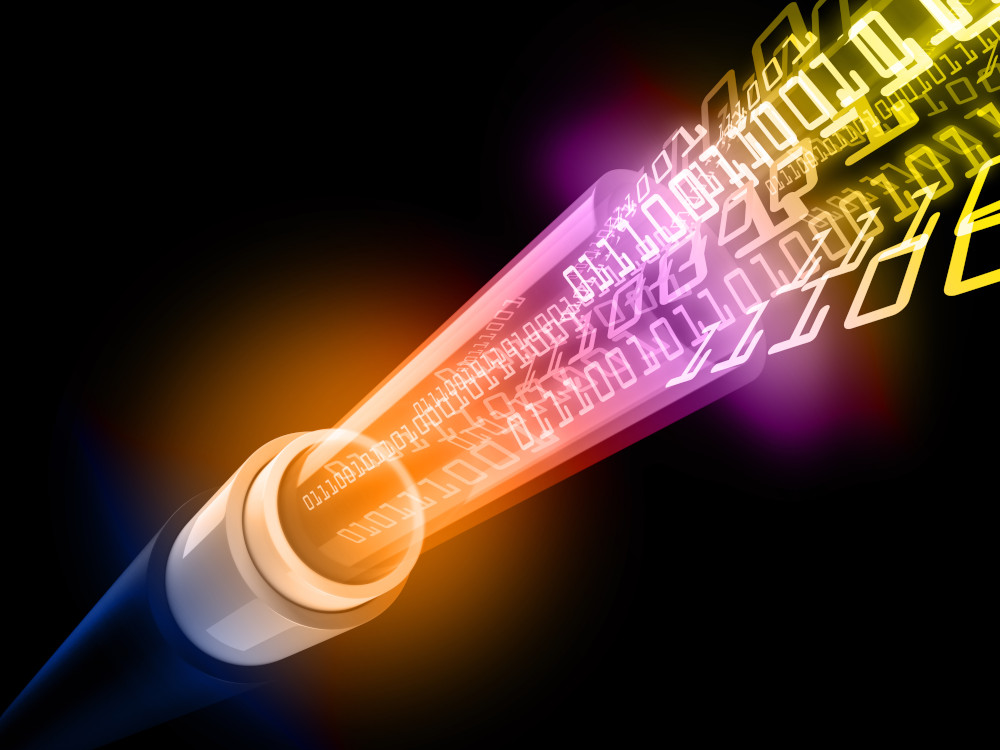
11 Aug Space division multiplexing for future fiber optical networks
Conventional fiber optic transmission systems use single-mode fibers that are reaching their capacity limits due to their nonlinear properties for today’s exponentially growing data volumes. This has led to the development of several novel optical fibers whose capacity is increased by spatial parallelism. This technology, known as space division multiplexing (SDM), has reportedly demonstrated an increase in data rates per fiber by a factor of 100.
To ensure a commercially successful deployment of this technology in future infrastructure, an entire SDM ecosystem must be developed. This is the goal of the newly established research group ‘Space Division Multiplexing’ in the department ‘Photonic Networks and Systems’ of the Fraunhofer Heinrich Hertz Institute (HHI). The research is financed within the framework of the funding program ‘Fraunhofer Attract’. In the SpaceCOMM (Space-Division Multiplexing for Classical and Quantum Optical Fiber Communications) project, the researchers say they will investigate practical use cases for SDM technology. They are working closely with researchers from other groups and departments at Fraunhofer HHI to pursue four key goals of increasing efficiency.
Parallel signal processing in real time
The first goal is real-time digital signal processing with multiple inputs and multiple outputs. To increase the efficiency of spatially-constrained fiber optic cables, researchers are investigating digital signal processing (DSP) functions in multi-core optical fibers. In this process, each individual fiber core can be used for signal transmission, so that different signals are transmitted simultaneously through one cable. This is said to significantly reduce the number of fibers. Real-time and high-speed DSP capabilities help to recover information from multiple spatial channels mixed during transmission in a coupled SDM fiber.
In SpaceCOMM, researchers are investigating transceiver chips that have multiple transmitter modules as well as receiver modules, enabling parallel data transmission. This will allow data to be transmitted in a more energy-efficient and cost-effective manner. The second goal, therefore, according to the researchers, is to develop transceiver devices that are optimized for SDM transmission and include spatial multiplexing capabilities to connect the transceivers directly to the new SDM fiber.
Increased energy efficiency of fiber amplifiers
The third goal of the research group is to investigate energy-efficient optical amplifiers for SDM. Since optical fiber transmissions are not possible without power losses, erbium-doped fiber amplifiers (EDFAs) are attached to the lines every 50 to 100 km. Because of the absorption spectrum of EDFAs, different wavelength channels can achieve different gains. Based on their research, the group aims to find the best possible ratio of required electrical power and achievable gain of EDFAs. Such energy efficiency considerations are particularly important for submarine cables, whose capacity is typically limited by the electrical power that can be delivered from shore.
If fully successful, objectives one through three will be combined into a system demonstrator of a coupled SDM transmission system. This will use fully integrated SDM transmit-receive units and low bandwidth EDFAs.
Application in quantum communication
The fourth objective is to investigate the use of SDM fibers for quantum key distribution (QKD) transmission. Fiber amplifiers cannot be used for these special data transfers, so the transmission distance of conventional QKD transmission is limited by the data loss of the optical fibers. One way to increase both the transmission rate and distance is to use high-dimensional quantum keys. Novel SDM fibers have the potential to implement such high-dimensional quantum keys, the researchers said.
Bringing disruptive technology to market
“With the current power consumption of the Internet, we need to find new approaches to increase the efficiency of our infrastructure so that we can save energy and costs,” said Professor Dr.-Ing. Georg Rademacher, who will lead the newly formed SDM group at Fraunhofer HHI. “Fraunhofer Attract enables us to bring current research findings in the field of Space Division Multiplexing closer to market maturity. In addition, our research strengthens Germany as a location for optical communications: SDM technology is so disruptive that its implementation will generate many innovations.” The group was founded in April 2023 and will receive 2.5 million euros in funding over a 5-year period.
Source: www.hhi.fraunhofer.de
Bild: bioraven/shutterstock.com






